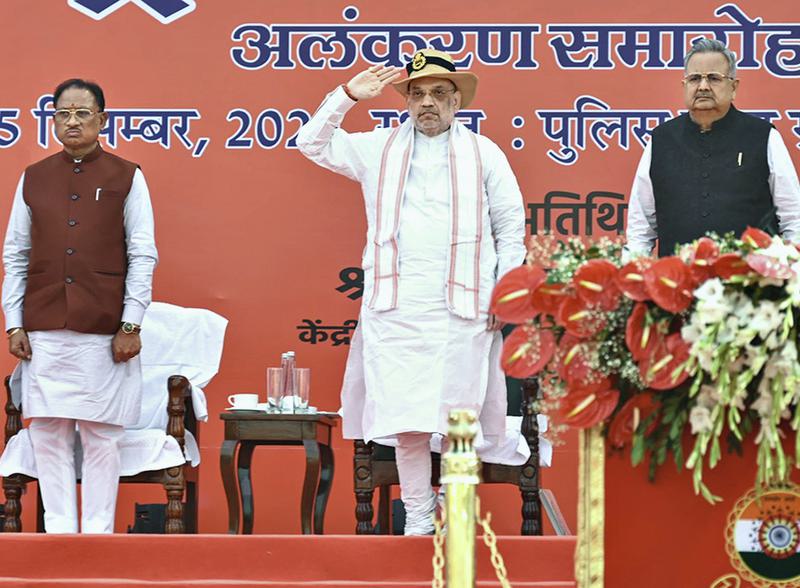India’s Startup Revolution

- 15 Jan 2025
Context
India has solidified its position as one of the most dynamic startup ecosystems globally, emerging as a hub for innovation, entrepreneurship, and technological progress. However, realizing its ambition of becoming the top startup ecosystem requires addressing critical challenges and leveraging available opportunities.
Current Landscape of Indian Startups
Growth and Innovation
India ranks as the third-largest startup ecosystem in the world, following the U.S. and China. As of January 15, 2025, over 1.59 lakh startups have been officially recognized by DPIIT, with more than 120 attaining unicorn status (valuation exceeding $1 billion).
Investment Trends
Despite economic fluctuations, India's startups continue to attract significant investments. In 2022, venture capitalists infused $25 billion into the ecosystem, reaffirming India’s position as a preferred destination for global investors. Although there was a slowdown in 2023, domains like Software as a Service (SaaS) and climate tech continue to secure substantial funding.
Government Support
India’s startup-friendly policies, including Startup India, Digital India, and Atmanirbhar Bharat, have created an enabling environment. Notable initiatives include:
- Tax incentives, faster patent approvals, and regulatory relaxations.
- The launch of a ?10,000 crore Fund of Funds for Startups (FFS) in 2023 to improve capital accessibility.
- The Bharat Startup Knowledge Access Registry (BHASKAR) to streamline collaboration among startups and investors.
Regional Growth
- Tier II and III Expansion: Nearly 50% of startups are now based in emerging hubs such as Indore, Jaipur, and Ahmedabad.
- Tamil Nadu: The state boasts a $28 billion startup ecosystem, growing at 23%. Chennai alone houses around 5,000 startups, significantly contributing to employment generation.
- Kerala: With a $1.7 billion startup ecosystem, Kerala exhibits a compound annual growth rate of 254%, emphasizing cost-effective tech talent hiring.
Key Challenges Faced by Startups
1. Funding Constraints
The global economic downturn, coupled with rising interest rates, has limited venture capital inflows, resulting in layoffs and operational cutbacks.
2. Regulatory and Compliance Barriers
Despite government support, startups grapple with complex tax structures, evolving data protection laws, and stringent compliance requirements, including ESOP taxation policies.
3. Scaling and Market Adaptability
Many startups struggle with operational inefficiencies, limited market penetration, and inadequate infrastructure, hampering growth potential.
4. High Failure Rate
Approximately 90% of Indian startups fail within five years due to poor product-market fit, lack of financial planning, and insufficient adaptation to market needs.
5. Talent Shortages
India faces stiff competition in acquiring skilled professionals in areas like AI, cybersecurity, and machine learning, making retention increasingly difficult amid economic uncertainties.
Strategic Measures to Strengthen India’s Startup Ecosystem
1. Enhancing Policy Frameworks
- Simplified Regulations: Streamline startup registration, funding approvals, and international business operations.
- IP Protection: Strengthen intellectual property laws to boost R&D investment.
- Sector-Specific Initiatives: Develop targeted policies for AI, deep tech, healthcare, and green technologies.
2. Expanding Funding Access
- Encouraging Domestic Investment: Leverage pension and sovereign wealth funds to invest in startups.
- Public-Private Partnerships: Foster large-scale government-industry collaboration to finance emerging ventures.
- Decentralized Funding: Expand angel investor networks and micro-investment opportunities, particularly in Tier II and III cities.
3. Building Robust Infrastructure
- Tech Parks and Incubation Centers: Establish state-of-the-art facilities with mentorship programs.
- Improved Digital Connectivity: Ensure high-speed internet access in underserved regions.
- Enhanced Logistics and Supply Chains: Strengthen infrastructure to support startup scalability.
4. Developing a Skilled Workforce
- STEM and Entrepreneurial Education: Introduce curriculum enhancements in technical and business disciplines.
- Upskilling Programs: Collaborate with industry leaders to train professionals in high-demand skills.
- Diversity and Inclusion: Promote initiatives encouraging women and marginalized communities in entrepreneurship.
5. Fostering Innovation and Risk-Taking
- Strengthened R&D Funding: Increase allocations to universities and private research sectors.
- Encouraging Entrepreneurship: Reduce societal stigma surrounding startup failures to promote risk-taking.
- Leveraging Domestic Challenges: Address local issues like climate change and urbanization through innovation.
6. Expanding Global Reach
- International Collaborations: Partner with foreign accelerators and governments.
- Ease of Cross-Border Trade: Simplify export and import regulations for startups.
- Engaging the Indian Diaspora: Encourage successful overseas entrepreneurs to mentor and invest in Indian startups.
7. Advancing Sustainability Goals
- Green Tech Promotion: Support startups focusing on renewable energy and circular economy initiatives.
- Eco-Friendly Incentives: Offer financial support to ventures aligning with sustainability targets.
- Inclusive Growth Strategies: Expand agritech, edtech, and health-tech startups in rural areas, supporting platforms like the Women Entrepreneurship Platform (WEP) by NITI Aayog.
Building a Resilient Digital Economy
To fortify India's digital economy, startups should leverage existing infrastructure like UPI and Aadhaar while capitalizing on emerging technologies such as AI, 5G, and blockchain. A robust cybersecurity framework and data protection policies will be essential to ensure investor confidence.
Supreme Court Directs Policy for Sacred Groves Protection

- 20 Dec 2024
In News:
Recently, the Supreme Court of India issued a significant judgment directing the Union Government to formulate a comprehensive policy for the protection and management of sacred groves across the country. These natural spaces, traditionally safeguarded by local communities, play a crucial role in preserving both ecological diversity and cultural heritage.
What are Sacred Groves?
Sacred Groves are patches of virgin forests that are protected by local communities due to their religious and cultural significance. They represent remnants of what were once dominant ecosystems and serve as key habitats for flora and fauna. Typically, sacred groves are not just ecological reserves, but also form an integral part of local traditions, often protected due to spiritual beliefs.
Key Features of Sacred Groves:
- Ecological Value: Sacred groves contribute significantly to biodiversity conservation.
- Cultural Significance: These groves are revered in various religious practices and are central to local traditions.
- Geographical Presence: Sacred groves are found in regions like Tamil Nadu, Kerala, Karnataka, Maharashtra, and parts of Rajasthan.
Supreme Court's Directive
The court's judgment was based on a plea highlighting the decline of sacred groves in Rajasthan, particularly those being lost due to deforestation and illegal land-use changes. While the Wildlife (Protection) Act of 1972 empowers state governments to declare community lands as reserves, the court recognized the need for a unified national policy to protect sacred groves as cultural reserves.
Recommendations:
- Nationwide Survey: The Ministry of Environment, Forest, and Climate Change (MoEF&CC) was instructed to conduct a nationwide survey to map and assess sacred groves, identifying their size and extent.
- Legal Protection: Sacred groves should be recognized as community reserves and protected under the Wildlife (Protection) Act, 1972.
- State-Specific Measures: The Rajasthan government was specifically directed to carry out detailed mapping (both on-ground and satellite) of sacred groves within the state, ensuring that the groves are recognized for their ecological and cultural significance.
The Role of Sacred Groves in Conservation
Sacred groves play a pivotal role in the conservation of biodiversity. They serve as refuges for various plant and animal species, and the traditional practices associated with these groves, such as tree worship, discourage destructive activities like logging and hunting.
Ecological and Cultural Importance:
- Sacred groves often act as critical biodiversity hotspots, preserving rare and indigenous species.
- They help maintain clean water ecosystems and act as carbon sinks, contributing to climate mitigation.
- Practices of non-interference with these areas have allowed flora and fauna to thrive over centuries.
Cultural Significance Across India
The importance of sacred groves is deeply embedded in India's diverse cultural heritage. They are considered the abode of deities, and various regions have unique names and rituals associated with these groves.
Examples of Sacred Groves in India:
- Himachal Pradesh: Devban
- Karnataka: Devarakadu
- Kerala: Kavu
- Rajasthan: Oran
- Maharashtra: Devrai
Piplantri Village Model
A key example highlighted in the judgment was the Piplantri village in Rajasthan, where the community undertook a remarkable transformation of barren land into flourishing groves. The initiative, driven by local leadership, involves planting 111 trees for every girl child born, which has led to several environmental and social benefits.
Impact of Piplantri's Community Efforts:
- Over 40 lakh trees have been planted, which has recharged the water table by 800-900 feet and lowered the local climate by 3-4°C.
- The initiative has contributed to the reduction of female foeticide and empowered women's self-help groups.
- The village now enjoys economic growth, better education opportunities, and increased local income.
Legal and Statutory Framework
Sacred groves are already recognized under existing Indian laws, notably the Wildlife (Protection) Act, 1972, which allows states to declare sacred groves as community reserves. Additionally, the National Forest Policy of 1988 encourages the involvement of local communities in the conservation of forest areas, a principle supported by the Godavarman Case of 1996.
Key Legal Provisions:
- Wildlife (Protection) Act, 1972: Empowers state governments to declare sacred groves as community reserves.
- National Forest Policy, 1988: Encourages community involvement in the conservation and protection of forests, including sacred groves.
- Scheduled Tribes and Other Traditional Forest Dwellers (Recognition of Forest Rights) Act, 2006: Suggests empowering traditional communities as custodians of sacred groves.
Looking Ahead: The Need for Action
The Supreme Court has scheduled further hearings to assess the progress of the survey and mapping efforts by Rajasthan. The court also stressed the importance of empowering traditional communities to continue their role as custodians of sacred groves, ensuring their sustainable protection for future generations.
By recognizing the ecological and cultural significance of sacred groves and encouraging community-driven conservation efforts, the Supreme Court’s ruling sets a precedent for more inclusive environmental policies in India. This could also inspire similar initiatives in other parts of the world, promoting the protection of sacred natural spaces for their critical role in maintaining biodiversity and fostering sustainable communities.
Commitment to Eradicating Naxalism in Chhattisgarh by 2026

- 17 Dec 2024
Overview
Union Home Minister Amit Shah has reiterated India's commitment to eliminate Naxalism in Chhattisgarh by March 31, 2026. He emphasized the progress made in the fight against Naxalism, highlighting key successes and outlining the strategy for the coming years.
Key Pointers
- Government Commitment: Amit Shah emphasized the joint commitment of the Government of India and the Chhattisgarh state leadership to rid the state of Naxalism by 2026.
- Security Forces’ Success: Over the past year, Chhattisgarh police neutralized 287 Naxalites, arrested around 1,000, and saw 837 surrenders.
- Top Naxal Cadres Neutralized: The state forces successfully neutralized 14 high-ranking Naxal cadres.
- President’s Police Colour Award: Chhattisgarh Police received the President's insignia within 25 years, a significant achievement for the state.
The Three-Pronged Strategy for Eliminating Maoist Insurgency
- Security Measures (Force)
Deployment of Security Forces
- Enhanced Presence: Increased deployment of Central and State police forces in Left-Wing Extremism (LWE) areas.
- Joint Operations: Coordinated operations between state and central forces, including CRPF and COBRA units.
- Upgraded Technology: Incorporation of UAVs, solar lights, and mobile towers to enhance operational efficiency.
Operation SAMADHAN
- Key Elements:
- Smart Leadership: Leading with innovative strategies.
- Aggressive Strategy: Swift, decisive action against insurgents.
- Motivation and Training: Strengthening the capabilities of forces.
- Actionable Intelligence: Real-time intelligence for effective operations.
- Harnessing Technology: Using modern tech for strategic advantage.
2. Development Initiatives
Focused Development Schemes
- PMGSY: Rural road connectivity under the Pradhan Mantri Gram Sadak Yojana.
- Aspirational Districts Program: Improving infrastructure in Naxal-affected areas.
- Skill Development: Targeted schemes in 47 LWE-affected districts to reduce unemployment.
Infrastructure Development
- Special Infrastructure Schemes: Building schools, roads, and bridges in remote areas to integrate them into the mainstream economy.
- Rehabilitation: Focus on providing rehabilitation for former Naxals through education and vocational training.
3. Empowerment (Winning Hearts and Minds)
Public Engagement
- Tribal Empowerment: Strengthening communication with tribal communities to reduce alienation and mistrust.
- Rehabilitation Policies: Surrender schemes offering incentives like education and financial aid to reintegrate former insurgents into society.
Maoism: Ideology and Background
What is Maoism?
- Origin: A form of communism developed by Mao Tse Tung, focusing on armed insurgency to capture state power.
- Core Beliefs: Maoists believe in violence and insurrection as legitimate means to overthrow the state and establish a People’s Democratic Republic.
- Indian Maoism: The Communist Party of India (Maoist), formed in 2004, leads the largest Maoist insurgency in India.
Recent Achievements in Combatting Maoist Insurgency
Key Successes in 2023
- Maoist-Free Villages: Villages in Dantewada declared "Maoist-free," a significant victory for the state.
- Reduction in Security Forces’ Casualties: 14 deaths in 2024, a dramatic decrease from 198 deaths in 2007.
- Infrastructure and Logistical Support: Enhanced use of helicopters and fortified police stations.
Government’s Commitment to Rebuilding
- Rehabilitation and Welfare: The government is implementing policies to improve the living standards of affected families, including 15,000 houses for Naxal-affected regions.
- Economic Development: Focus on building infrastructure and providing employment through skills training programs.
Challenges in Eliminating Naxalism
Socio-Economic Issues
- Exploitation of Tribals: Marginalization of tribals due to displacement for mining and forestry.
- Lack of Infrastructure: Basic amenities like roads, schools, and healthcare are absent in many areas.
- Centralized Naxal Command: The CPI (Maoist) retains a strong leadership, despite fragmentation of its forces.
Governance and Trust Issues
- Alienation of Local Populations: Ineffective governance and poor implementation of welfare schemes fuel local support for Naxal groups.
- Resource Conflict: The Naxals exploit rich mineral resources in the region to fund their insurgency.
Way Forward
Governance and Economic Reforms
- Tribal Empowerment: Form Tribal Advisory Councils as per the Fifth Schedule for better resource management.
- Land Redistribution: Enforce the Land Ceiling Act to reduce inequality.
- Livelihood Programs: Offer alternative livelihoods to reduce dependency on illegal activities.
Security Measures
- Paramilitary Deployment: Specialized forces to secure tribal areas and enable local governance.
- Resource Management: Ensure sustainable exploitation of natural resources, involving tribal communities in the decision-making process.
Peace Dialogues
- Inclusive Policies: Engage in dialogue with Naxals to facilitate their reintegration into mainstream society.
Conclusion
Naxalism in India, particularly in Chhattisgarh, is a complex issue rooted in socio-economic inequalities, lack of development, and historical alienation of tribal communities. The government's approach, encapsulated in the SAMADHAN strategy, combines security operations with developmental initiatives and a focus on empowerment to tackle the problem. With a clear commitment to eliminate Naxalism by 2026, the Indian government is making significant strides in reducing violence, improving governance, and integrating affected communities into the mainstream.
Artificial Solar Eclipse: Why Are Satellites Trying to Block the Sun?
- 14 Dec 2024
Introduction
The European Space Agency (ESA) has launched Proba-3, a mission that will create an artificial solar eclipse to study the Sun's atmosphere, known as the corona. This mission aims to demonstrate new technology and address unresolved questions about the Sun's outer layers.
What is an Artificial Solar Eclipse?
- Definition: An artificial solar eclipse mimics the natural phenomenon where the moon blocks sunlight, allowing detailed observation of the Sun’s corona.
- Created By: The eclipse is created by two satellites, which align to block the Sun's light and generate a controlled shadow for scientific study.
- Purpose: The goal is to study the Sun’s corona, particularly to understand why it is significantly hotter than the Sun’s surface.
How Does the Proba-3 Create an Eclipse?
Launch and Spacecraft
Proba-3 was launched on December 5 from the Satish Dhawan Space Centre in India. The mission uses two satellites:
- Coronagraph Spacecraft (CSC): This spacecraft guides the other satellite.
- Occulter Spacecraft (OSC): This satellite has a disk that creates a controlled shadow onto the CSC.
Formation Flying
Using Precise Formation Flying (PFF) technology, the two spacecraft maintain a precise distance of 150 meters (492 feet) apart, aligning perfectly with the Sun. This alignment mimics the effect of a solar eclipse.
Precision Requirements
The eclipse will need to maintain millimetre-level accuracy for up to six hours per orbit to provide scientists with stable observational conditions.
Mission Goals
- Demonstrating PFF Technology: One of the primary objectives of the Proba-3 mission is to demonstrate PFF technology. This involves using GPS and inter-satellite radio links for positioning, as well as maintaining a precise distance between the two spacecraft.
- Studying the Sun’s Corona: Another goal is to understand why the corona is hotter than the Sun's surface. The onboard instruments, including a coronagraph, will help with this research. The coronagraph will block out the Sun’s bright light, enabling clearer observations of the corona.
- ASPICCS Coronagraph: The Proba-3 coronagraph, named the Association of Spacecraft for Polarimetric and Imaging Investigation of the Corona of the Sun (ASPICCS), is designed to observe the corona in high detail, mimicking the observational conditions of a total solar eclipse.
Why Is This Such a Big Deal?
- Revealing the Sun’s Corona: The Sun’s corona is typically invisible because it is much less bright than the Sun’s surface. It can only be seen during a solar eclipse when the Moon blocks the Sun's light.
- Predicting Space Weather: Studying the corona helps scientists predict space weather and geomagnetic storms, which can disrupt satellites and other systems on Earth.
- Extended Observations: Unlike natural solar eclipses, which last only a few minutes, Proba-3 can provide six hours of observation time in each orbit (approximately 19 hours and 36 minutes), allowing for continuous study of the corona.
What is Precise Formation Flying (PFF) Technology?
- Definition: PFF technology allows satellites to maintain exact positions and orientations relative to each other in orbit.
- Mechanism: The technology uses GPS, inter-satellite radio links, and automated control systems to ensure alignment.
- Implementation in Proba-3: In the Proba-3 mission, the Coronagraph and Occulter spacecraft stay 150 meters apart, using PFF to maintain millimetre-level precision, which is crucial for simulating a solar eclipse.
- Benefits: PFF enhances mission accuracy and provides a platform for advanced observational techniques that will enable more detailed studies of the Sun's corona.
Conclusion
Proba-3 is a groundbreaking mission that will offer unprecedented insights into the Sun’s corona by simulating solar eclipses using advanced satellite technology. By studying the Sun’s outer layers, scientists aim to improve our understanding of space weather and the mysterious temperature anomaly of the corona.
